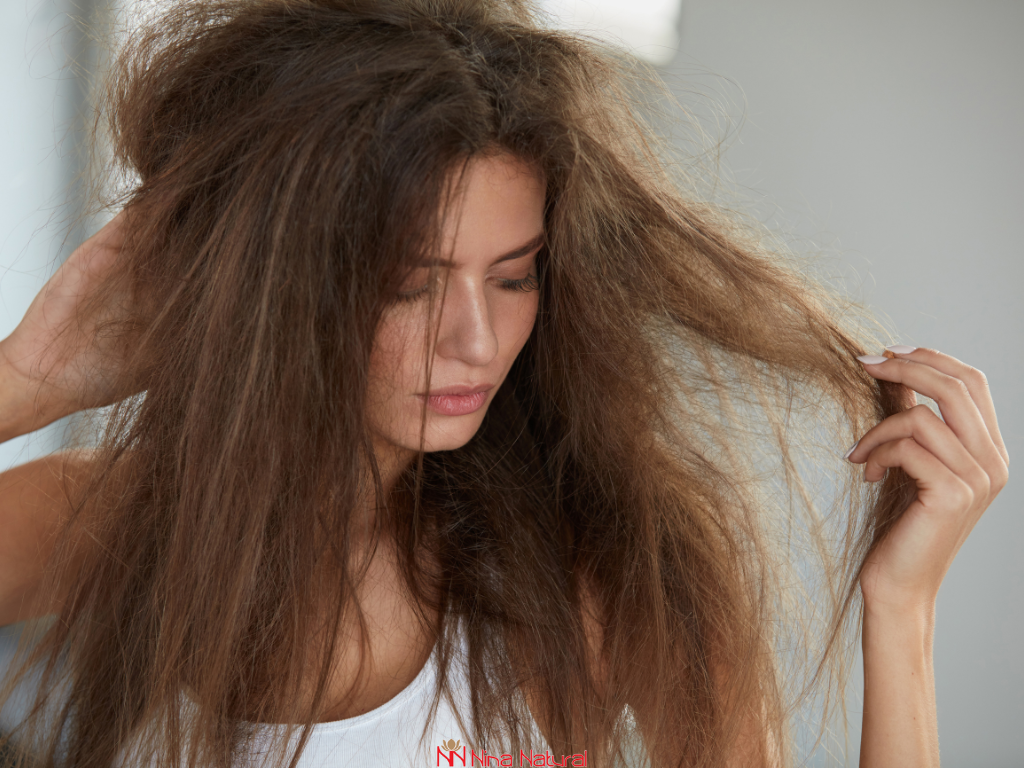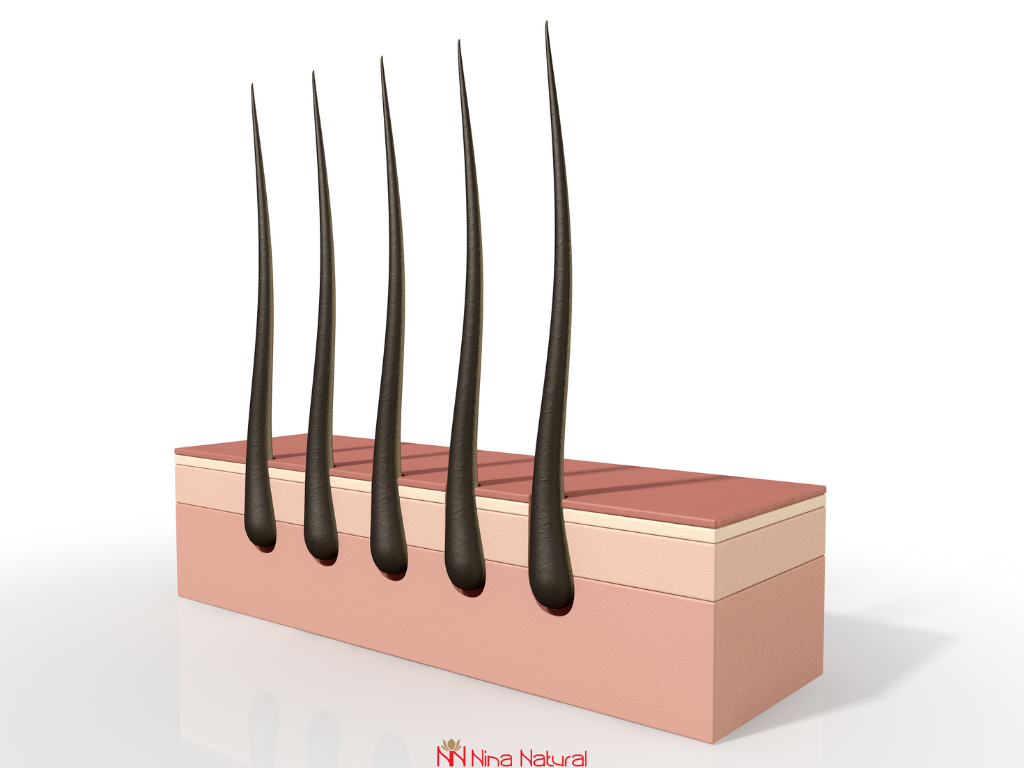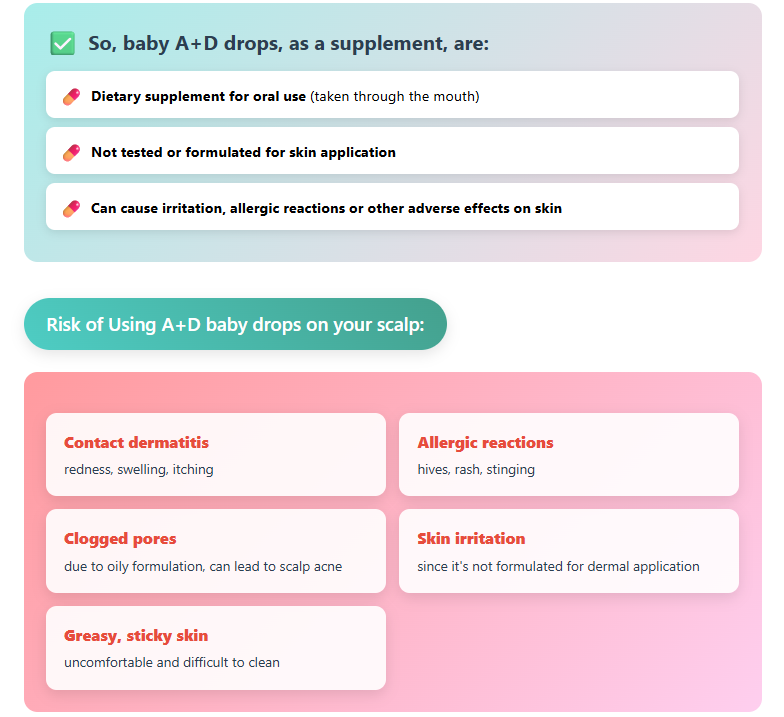D-Panthenol + Baby A+D Drops: A Popular but Senseless Combination

As much as we love TikTok and Instagram beauty tips, you have to admit – social media advice can truly be nonsensical. When we were researching ingredients for our Nina Natural All in One hair oil, we came across one “miraculous” recipe for a spray that supposedly works wonders for hair: mix 100ml of D-panthenol solution with 10ml of baby A+D drops and voila – you have a homemade treatment that will give you dream hair.
But wait a minute… Did anyone actually ask why these two specific products? Or did we just start mixing things because this seemed like a great combination to someone? It’s time for some healthy skepticism and an explanation of why this “recipe” actually makes no sense.
First, let’s clarify – what are these products anyway?
D-Panthenol Solution – The Real Hero of the Story
D-panthenol solution is legitimately good for hair, there’s no doubt about that. It contains around 5% dexpanthenol (depending on the manufacturer), which is actually a “precursor” to vitamin B5 (pantothenic acid). When we apply panthenol solution to hair, it converts to the active form of vitamin B5 which helps with:
- Hair hydration – attracts and retains moisture in hair strands
- Damaged hair regeneration – helps repair hair structure
- Hair strengthening – reduces breakage and split ends
- Adding shine – makes hair look visually healthier
This isn’t a marketing story – panthenol has been used in cosmetics for decades and its effectiveness for hair care and growth improvement is scientifically proven. In our market, some manufacturers highlight these benefits on packaging, so in product descriptions we can find claims like “ideal product for caring for brittle and thin hair, hair damaged by coloring and blow-drying.” And that’s absolutely true.
Baby A+D Drops – A Supplement
Now we come to baby A+D drops. These drops contain vitamin A (in palmitate form) and vitamin D3 (cholecalciferol). This supplement is most commonly intended for children over 3 years old and adults, and is exclusively meant to be used as a dietary supplement.
DIETARY SUPPLEMENT. So, not “for external use on hair.” It doesn’t say “for hair care.” It says these drops should be taken orally, through the mouth, 3-6 drops daily.
Let’s remember: Vitamin A is essential for the reproduction of skin epithelial cells, and vitamin D helps with calcium and phosphorus absorption for healthy bones. Both vitamins are important for health, but when taken orally – through the mouth – and thus entering our body.

So why are we mixing these two things at all?
This is where the confusion arises. Someone probably thought: “Well, if vitamin A helps the skin, why wouldn’t it help hair when I put it on externally?” That sounds logical in theory, but in practice – not really.
Problem #1: “False Sense of Logic”
When we hear “panthenol + vitamins,” it sounds like a perfect combination. But that’s like saying “aspirin + half a potato helps with headaches” – aspirin will help, potato won’t harm the body, but there’s no logical connection between these two ingredients.
Problem #2: Habit of Using Products Outside Their Intended Purpose
Baby A+D drops passed quality control and received approval for ORAL use. Nobody said we should put them on hair roots.
Problem #3: Partial Information Adoption
There are products on the market called similarly: A+D drops for hair. When it’s said that you can use A+D drops for hair, it means it’s perfectly fine to use hair drops that are actually formulated to contain A and D vitamins for hair. These are products that contain Panthenol, Biotin, Ginkgo Biloba…
So, it sounds similar but that’s not IT.
Problem #4: Dosing Makes No Sense
The recommended dose of baby A+D drops is 3-6 drops DAILY, orally. Most online “recipes” advise putting 10ml (which is about 200 drops) in 100ml of panthenol solution and using this several times a week.
Does that make sense? Well, no.

OK, what happens when we put supplement A+D drops on hair?
Do these vitamins somehow get absorbed through the scalp?
Yes, to some extent, they can enter the bloodstream if we regularly apply them to the scalp.
Reality: This product is not tested for dermal application. Absorption depends on many factors: skin condition, skin thickness, amount applied… In theory, vitamin A can be absorbed through skin, and vitamin D can pass through the skin barrier BUT in products that are created for skin or hair care purposes!
So, baby A+D drops, as a supplement, are:
- Dietary supplement for oral use (taken through the mouth)
- Not tested or formulated for skin application
- Can cause irritation, allergic reactions or other adverse effects on skin
Risk of Excessive Exposure
Local Reactions:
- Contact dermatitis – redness, swelling, itching
- Allergic reactions – hives, rash, stinging
- Clogged pores – due to oily formulation, can lead to scalp acne
- Skin irritation – since it’s not formulated for dermal application
- Greasy, sticky skin – uncomfortable and difficult to clean
Vitamin A Overdose Symptoms
Acute:
- Headache, nausea, vomiting, dizziness
Chronic:
- Hair loss and baldness (ironic – opposite of desired effect)
- Dry, rough skin
- Cracked lips
- Liver enlargement
- Painful swelling along bones
Vitamin D Overdose
- Fatigue, loss of appetite
- Nausea and vomiting
- Diarrhea, weight loss
- Excessive urination
- Hypercalcemia (dangerous for heart and kidneys)
- Ear ringing
- Vision disorders
Additional Risks
- Unpredictable absorption – improper handling of this type of supplementation can lead to absorbing more than you think
- Cumulative effect – vitamins accumulate in the body
- Interactions with other medications/supplements you’re taking
- This formulation contains high vitamin concentrations
- Repeated application increases risk
- Toxicity symptoms can be serious and long-lasting

Conclusion
The risks of applying supplement A+D drops to the scalp have more drawbacks than benefits. Instead of rubbing supplements on your scalp, invest in hair products with A or D vitamins. Or use panthenol as a hair spray, and take A+D drops orally, as advised by a doctor.
But wait, my friend swears this helped her!
Ah yes, here we come to the Panthenol Effect (let’s call it that). When someone says the panthenol + baby A+D drops combination helped them, they’re probably right – but not because of the A+D drops, but because of the panthenol!
Panthenol really does help hair. So when you apply this combination and see improvement, only panthenol was doing its job. The A+D drops were there as a “passive passenger” that fortunately didn’t harm that person, but certainly didn’t help either.
It’s like eating green salad with gummy bears and saying “this food gives me energy” – yes, you get energy, but 99% of the energy comes from the gummy bears 🙂
Final Opinion on This Combination
Instead of combining supplements and panthenol solution in a hair spray, use panthenol solution as the manufacturer recommends: as a spray, undiluted or mixed with water in a 1:1 ratio.
Take A+D drops orally, as a dietary supplement, following instructions on when and how to use them.
Why did we write this article?
Because we love when homemade products have logic. And because we’re not happiest when we see women spending time and money on something that at best doesn’t help, and at worst can be harmful.
We don’t think women are easily influenced if you use this combination. We understand that we really trust some influencers. But there’s a difference between advice that has logic and pure misinformation. Being misinformed isn’t your fault – it’s the fault of those who spread such “advice” without any understanding.
What did we learn today?
- D-panthenol solution is an excellent hair product – use it freely
- Baby A+D drops are for oral consumption – don’t mix them into cosmetics, buy cosmetics with A or D vitamins
- Don’t believe all “influencers” – ask yourself why and how something actually works
Remember: Your hair and skin deserve care based on logic and science, your age, skin type and hair type, problems you have with skin, problems you have with hair.
